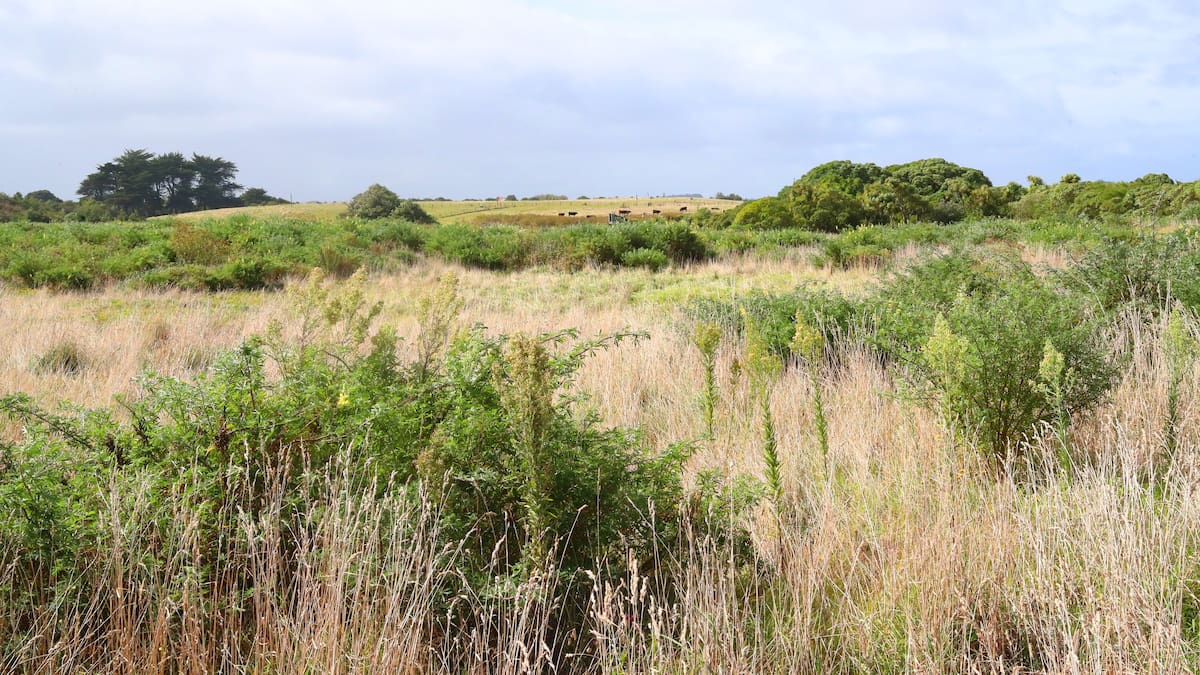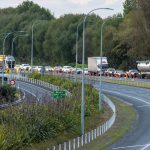The Kokohuia wetland area from Pururi Street, with the landfill cap in the background. Photo / Bevan Conley
Expanded Kokohuia and Titoki wetland areas could include a range of cycleways and walkways, according to a new master plan for the area.
A master plan, made after community workshops in 2012, 2013 and 2021, also suggests an ecological connection from the Whanganui River through to Kokohuia and Titoki and a wetland centre for education and research.
The cap of the former Balgownie landfill site could become a recreation space and would also provide high ground in the event of a tsunami.
Guiding the project is the Mokoia Catchment Rōpu, a collective made up of iwi and hapū, the Whanganui District Council and technical advisers.
Spokesman Ken Mair, of Ngāti Tūpoho, told the council that historically, iwi and hapū had “been most disturbed” about the desecration of the area, especially the presence of the Balgownie landfill site from 1956.
“[The wetland] was our food basket. It was where tuna (freshwater eels) came, it was where we collected kai, it was where the beautiful birds were,” Mair said.
“From our point of view, we’ve got a responsibility to ensure we look into the future of returning that area to what it was.”
Mair acknowledged advocates such as Tania Tangaroa, Te Kura o Kokohuia and Francis Ponga for the efforts they had already put into the project.
A report from the council’s three waters project engineer Nikki Ni said the final capping of the Balgownie landfill was completed in March 2001.
Some of the perimeter areas of the site were now being leased for commercial and farming use and some were being used to store materials including concrete, green waste, steel, and car bodies.
“The landfill and current land uses had an impact on how the land was perceived by the community and on the environment with open leachate drains and rubbish becoming exposed on the landfill edges during rain events,” it said.
“The site had been fenced off from the community for decades.”
Speaking to the Chronicle, council senior stormwater engineer Kritzo Venter said gas coming from the landfill site was monitored.
Reports showed very low emissions, if any.
“Any seepage is captured in leachate drains that go to the wastewater system and the treatment plant,” Venter said.
Consultation and engagement will determine whether the community wants to use the former landfill site.
“We’ll do the work together and we’ll find some answers that will inform how we go into the future.”
Venter told the council the Kokohuia area could be used strategically for water management.
It was the lowest spot in the catchment, he said.
“The catchment is substantial and all its flood waters would like to come and collect here, waiting for their turn to drain out.”
He said there were also opportunities upstream at the Titoki wetland, which could potentially be an even larger stormwater site.
“We’ve come across a very interesting picture that was drawn by a surveyor in 1844. It was called the Titoki Lake.
“It’s a huge expanse, maybe 20 hectares, and that is potentially what could be used for stormwater management.”
That was just one component of the project, Venter said.
“What it does for the community, and what the community can leverage off it, is what makes it a really exciting vision.”

The Titoki and Kokohiua wetland areas, which are connected by an underground pipe, cover around 60ha and stretch from just south of the Fitzherbert Rd extension to the Whanganui River.
Councillor Rob Vinsen asked if there was budget for the project in the council’s upcoming long-term plan.
He said Kokohuia was the most important project for the Whanganui community because it improved the environment, recreation, aesthetics, and resilience.
Venter said there were provisions for stormwater developments in the plan but not for “many of the other elements”.
“In saying that, we recognise this project is likely to attract a lot of interest from other sources.
“One of the next steps is to go and do some proper homework on what other partners and funding sources can be tapped into.
“We would need the community to collaborate on that, and through our Rōpu group, we will explore that.”
Vinsen said the Balgownie site was currently an embarrassment.
“We are only saved from the embarrassment because we don’t see it. Very few people take a walk around that particular area.
“This is our opportunity, and it’s good to hear that Kritzo has some funding for this.
“Obviously it won’t be enough and that is something politically, I think we need to address.”
Mike Tweed is an assistant news director and multimedia journalist at the Whanganui Chronicle. Since starting in March 2020, he has dabbled in everything from sport to music. At present his focus is local government, primarily the Whanganui District Council.




 Waikato roadworks this Easter: A guide to for travellers
Waikato roadworks this Easter: A guide to for travellers